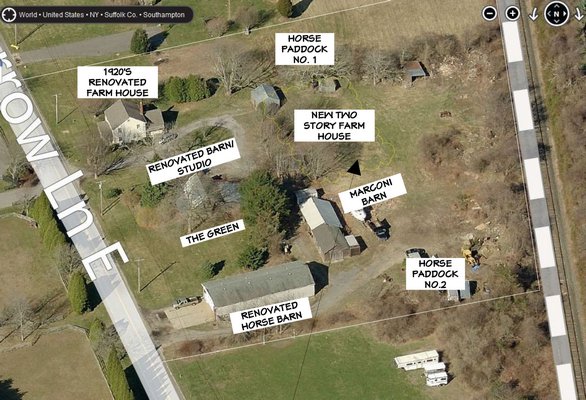
A new private horse farm is joining the agricultural ranks in Sagaponack. Set right across the street from Wölffer Estate Stables on Narrow Lane East, Heavy Horse Farm will be completed next fall. Aptly named, it will house three large Clydesdales, and their owners, Michael and Kerry Gaynor.
These draft horses were brought in from Illinois around 2006 when Mr. Gaynor first moved to the East End, and the couple is currently keeping them at Wölffer.
The Gaynors purchased the 3-acre property in August for $2.3 million from Tom Dombkowski, who grew up on the land. In fact, his family had owned it for generations and used to farm potatoes.
“I’m going to restore the property,” said Mr. Gaynor. In all, there will be nine different farm buildings on the property, from an existing chicken coop, to a potato barn, to an old farmhouse, which is about to get a new foundation. There will also be a new two-story farmhouse, as well as a horse paddock.
“There’s one barn on there in particular which we’re basically rebuilding, the Marconi barn,” Mr. Gaynor added.
Named after Guglielmo Marconi’s groundbreaking wireless telegraph system used just before the turn of the 20th century, the barn was actually the first telegraph station on Long Island, opened around 1902. It was one of many that dotted the coastline.
This pre-radio system allowed ships traveling the high seas to communicate with people on shore, as Marconi operators sent messages to the stations about the well-being of passengers.
Julie Greene, an archivist for the Bridgehampton Historical Society, told The Press last fall that the Sagaponack Marconi station was likely one of the first to learn that the Titanic was sinking.
Originally located off Sagg Main Street near the beach, the station was closed in 1915 due to diminishing traffic and dismantled two years later.
Mr. Dombkowski’s father and uncle had moved the building north to Narrow Lane East about 60 years ago. “Supposedly, they bought it to use for storage,” he told The Press last September. “Dad told me that they cut it in three pieces and put it on a flatbed trailer.” And, at one point the building was also used as a labor camp for the farm.
It later fell into disrepair and is one of two structures on the property the couple is having reconstructed, “because they were literally held together by termites,” Mr. Gaynor said. The other building is an old lean-to horse run-in. “Both of those have already been disassembled but are already in the process of being rebuilt. We’re happy that we’re getting the opportunity to do it.”